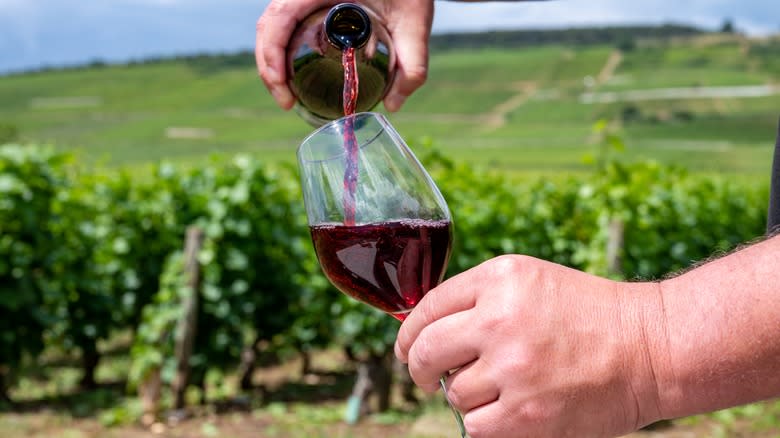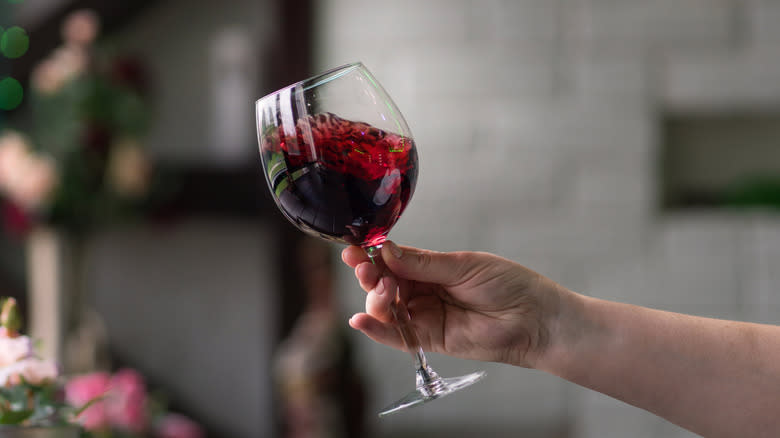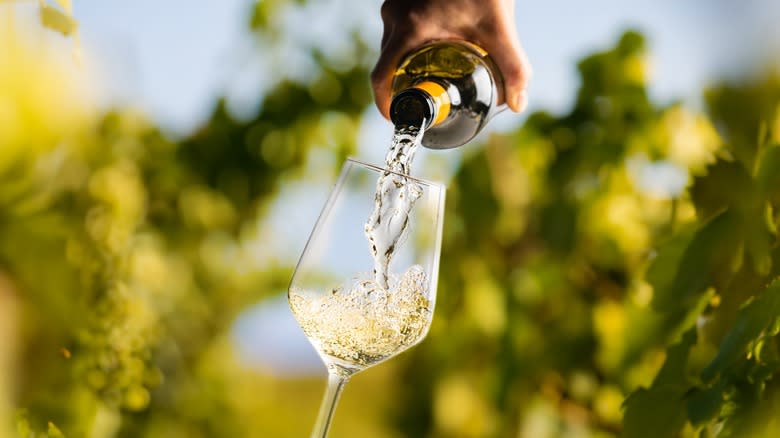A Pro Explains Why Overfilling Your Wine Glass Is A Huge Flavor Mistake

When pouring yourself a glass of wine, it's easy to pour a bit more than the standard glass. After all, measuring can be tricky, and a splash or two extra appeals when you've had a long day. Harmless as overfilling your glass may seem, Matt Strauch, General Manager and Wine Director of Noble Riot in Denver, spoke with Daily Meal and provided some exclusive insights into why this might actually be a wine-drinking mistake you should stop making. Strauch says, "Avoiding overfilling ensures a better-tasting experience and may even make the bottle last a little bit longer!"
He asserts that this is because when you overfill the glass, you don't get the same aroma out of the wine. Since aroma affects how we perceive taste, this can mean it might not have the same taste or complexity. He adds, "Personally, I've found that overfilling can lead to mishaps like inhaling wine, which is not pleasant." While that second note might not impact the flavor of your drink, it can certainly make your experience less enjoyable.
Read more: 26 Popular Vodka Brands, Ranked By Their Versatility
Overfilling Prevents You From Being Able To Swirl

Matt Strauch simplified the science behind swirling your wine. "Overfilling the glass prevents proper swirling ... which is essential for releasing the wine's aromatics," he says.
The science behind swirling your wine is that it oxidizes it, which helps sulfite molecules scatter, essentially eliminating unpleasant smells (and ultimately tasting notes). Plus, it makes the scent of the wine more noticeable and also mellows out harsh tannins.
If you do accidentally overfill your glass and find you can't swirl it, you might want to try decanting your wine to oxidize it instead. You can do this without a decanter by simply pouring the wine from one glass into another, which helps create a similar aerating movement that opens your drink and enhances the taste and aroma.
Beyond opening your wine's aroma, Strauch notes that this step serves another purpose: "Swirling also helps to warm fridge-cold wines," which can be great for ensuring you get a nice chill to your wine without it becoming cold and tough to drink.
How To Avoid Overfilling Your Glass

To enjoy the most flavorful glass of wine and avoid overfilling, Matt Strauch offers a handy trick: "My rule of thumb is to let the glass guide you. If the glass has a curve and taper-to-the-top design, fill the glass to the middle of the curve."
The curve serves almost like a line on the cup, letting you know when you've got the right amount of alcohol in your cup. Some glasses also bend inward slightly after the curve, which can make the bend more noticeable and, thus, easier to pour into.
Of course, not all wine glasses come with this handy indicator. "If there is no curve, fill the glass about one-third full," Strauch comments, noting that regardless of whether you use this method or pour into a curved glass, "Both methods facilitate swirling, which releases the wine's aromas."
Next time you're getting ready to pour a glass of wine, these two tricks can help you avoid overfilling your glass and altering the aroma and flavor of your wine.
Read the original article on The Daily Meal.

 Yahoo Lifestyle
Yahoo Lifestyle 
